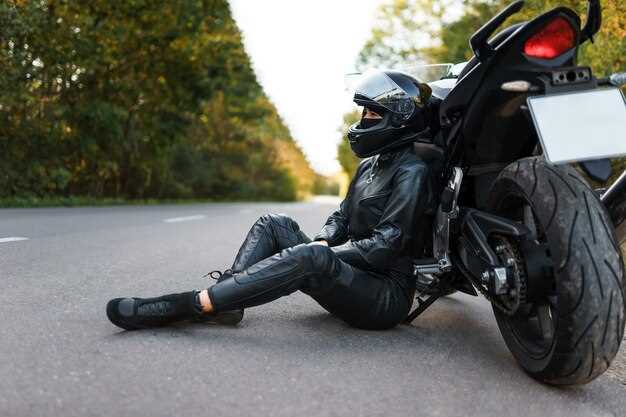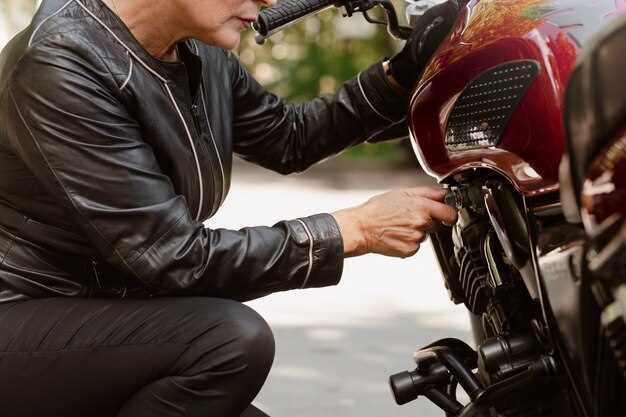
Effective braking techniques are essential for every motorcycle rider, especially in emergency situations. The ability to react quickly and appropriately can mean the difference between avoiding an accident and facing serious consequences. Understanding the dynamics of your motorcycle and the principles of emergency braking can significantly enhance your safety on the road.
When confronted with unexpected hazards, such as a sudden obstacle or a vehicle making an abrupt stop, knowing how to execute a proper emergency stop is critical. This involves more than just pulling the brake levers; it requires a combination of body positioning, throttle control, and the judicious application of both front and rear brakes. Mastering these skills allows riders to maintain control while minimizing stopping distances.
In this article, we will explore various emergency braking techniques tailored for motorcycle riders. By incorporating these methods into your riding practice, you can develop the confidence and competence needed to navigate high-pressure scenarios effectively. Whether you are a seasoned rider or just starting, each technique discussed will serve as a valuable tool in your safety arsenal.
Understanding Your Motorcycle’s Braking System
To effectively perform emergency braking, it is crucial to comprehend the components and function of your motorcycle’s braking system. Most modern motorcycles are equipped with either disc brakes or drum brakes, with disc brakes being more prevalent due to their superior stopping power and heat dissipation capabilities.
Disc brakes consist of a rotor, caliper, and brake pads. When the rider pulls the brake lever or presses the foot pedal, hydraulic fluid is pressurized, causing the caliper to clamp the brake pads against the rotor. This action creates friction that slows down the motorcycle. Understanding this mechanism allows riders to apply the brakes smoothly and efficiently, especially in emergency situations.
Additionally, many motorcycles feature anti-lock braking systems (ABS), which prevent the wheels from locking up during hard braking. ABS is especially beneficial in wet or slippery conditions, as it helps maintain steering control while maximizing braking effectiveness. Riders should familiarize themselves with whether their motorcycle is equipped with this system and practice using it appropriately.
Moreover, it is vital to regularly check and maintain the braking system. This includes inspecting brake pads for wear, ensuring the brake fluid is at the correct level, and checking for leaks or other mechanical issues. Maintaining your braking system not only enhances safety during regular rides but is essential for effective emergency braking as well.
Finally, understanding how weight distribution affects braking is crucial. When executing emergency braking, the rider’s position, as well as the load on the motorcycle, can influence how quickly the motorcycle stops. Properly shifting your weight forward during braking can enhance stability and reduce stopping distance, making it easier to avoid potential hazards.
Key Techniques for Maximum Stopping Power

In emergency situations, understanding how to utilize your motorcycle’s brakes effectively is crucial for safety. One of the primary techniques involves the proper use of both front and rear brakes. The front brake typically provides the majority of stopping power, as it engages the motorcycle’s weight transfer during braking. It is essential to apply the front brake gradually, avoiding abrupt force, which can lead to loss of control.
Progressive Braking is a technique where the rider gradually increases brake pressure. Start with light pressure on the front brake, then progressively firm up as you gauge the bike’s response. This method helps maintain stability while maximizing halting power.
Another vital aspect is weight distribution. Leaning forward on the bike during braking shifts your weight onto the front wheel, enhancing its grip on the road. This adjustment allows for more effective use of the front brake without risking a tip-over.
Practicing emergency stops in a controlled environment can significantly improve your reaction time and braking technique. Set up a safe area where you can focus on stopping quickly while practicing both front and rear brake application simultaneously.
Furthermore, maintaining proper following distance is an essential safety measure. This practice provides extra time to react in emergencies. If you see a potential hazard, start braking early to avoid a panic stop that could lead to losing control.
Additionally, ensure your motorcycle is in optimal condition. Regularly check your brake system, tires, and suspension to guarantee maximum stopping efficiency. A well-maintained motorcycle enhances safety during emergency maneuvers.
Practicing Emergency Braking in Different Scenarios

Effective emergency braking requires understanding various situations that may arise while riding a motorcycle. Practice is key to mastering this critical skill, allowing riders to react quickly and safely in unexpected circumstances.
One common scenario is emergency braking on dry pavement. Riders should focus on applying even pressure to both the front and rear brakes, gradually increasing force without locking either wheel. This balance prevents skidding and allows for better control. Practicing in a straight line and during turns helps build confidence in these conditions.
Another scenario involves braking on wet or slippery surfaces. Riders must adjust their technique by utilizing smoother, more controlled braking inputs. Drills on wet roads can teach how to modulate braking pressure, maintaining stability while reducing speed. Understanding the effects of traction loss and how to recover from it are essential skills that can be developed through practice.
Braking while navigating obstacles is another critical training scenario. Riders should simulate situations where a sudden obstacle appears, requiring immediate braking. This practice helps in recognizing the need to modify braking techniques, such as shifting weight backward to prevent the front wheel from locking up.
Riders should also practice emergency braking while cornering. This can be particularly challenging, as applying brakes while leaned over can lead to loss of traction. Training should include techniques for upright braking, allowing maximum grip while still in a corner. Learning to assess when to brake before entering a turn versus during the turn is crucial for safe riding.
Finally, practicing emergency braking with varying loads is important. Carrying a passenger or cargo changes the weight distribution and handling characteristics of the motorcycle. Riders should conduct drills that simulate these conditions, ensuring they are familiar with how their motorcycle responds to braking under different loads.




